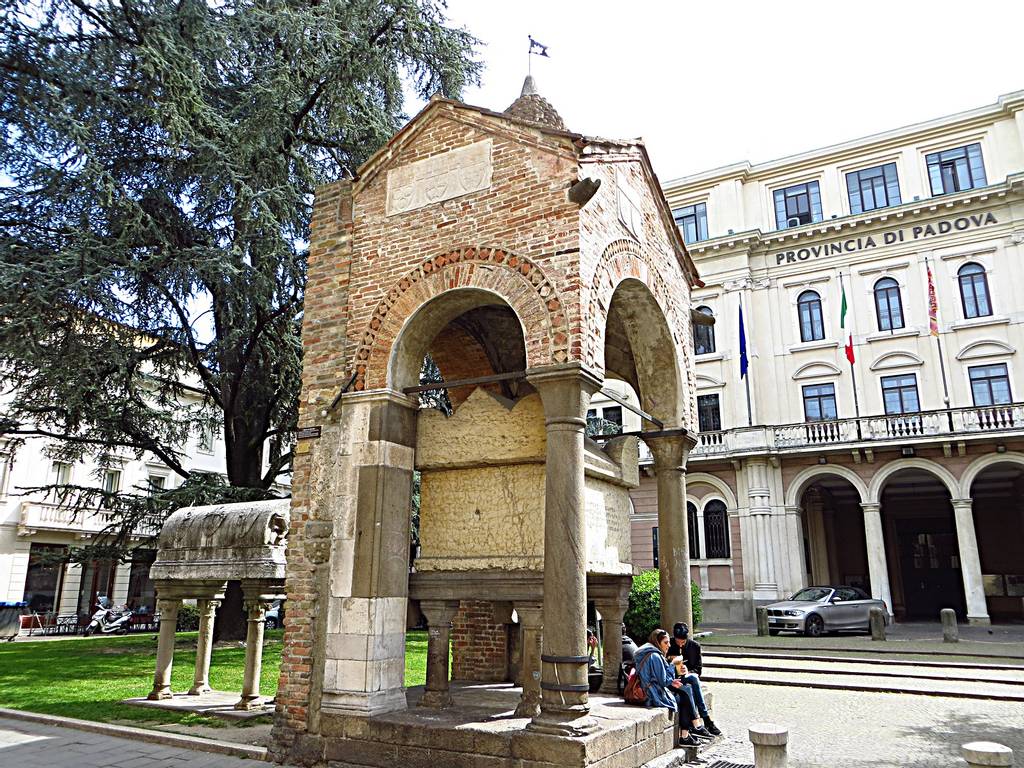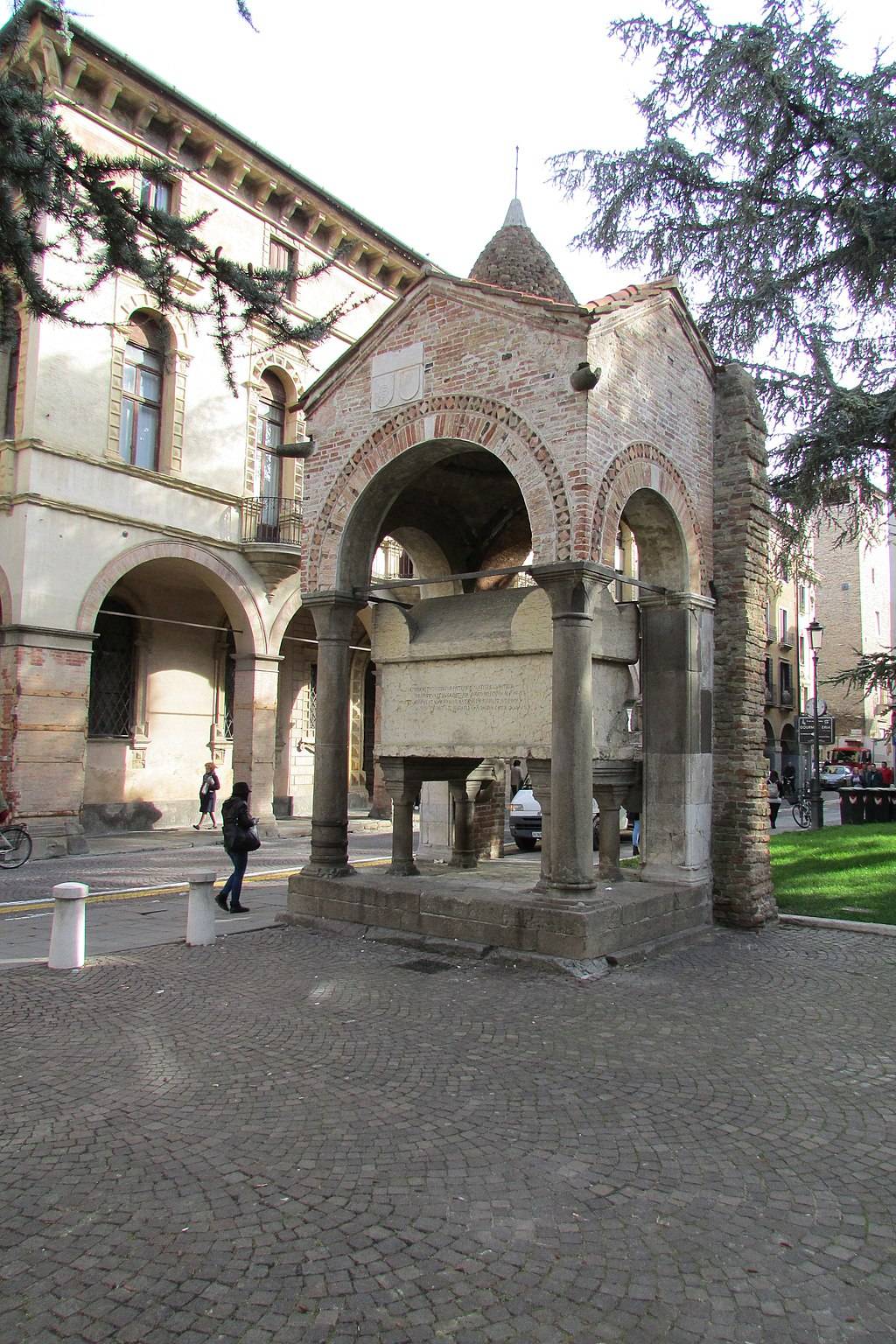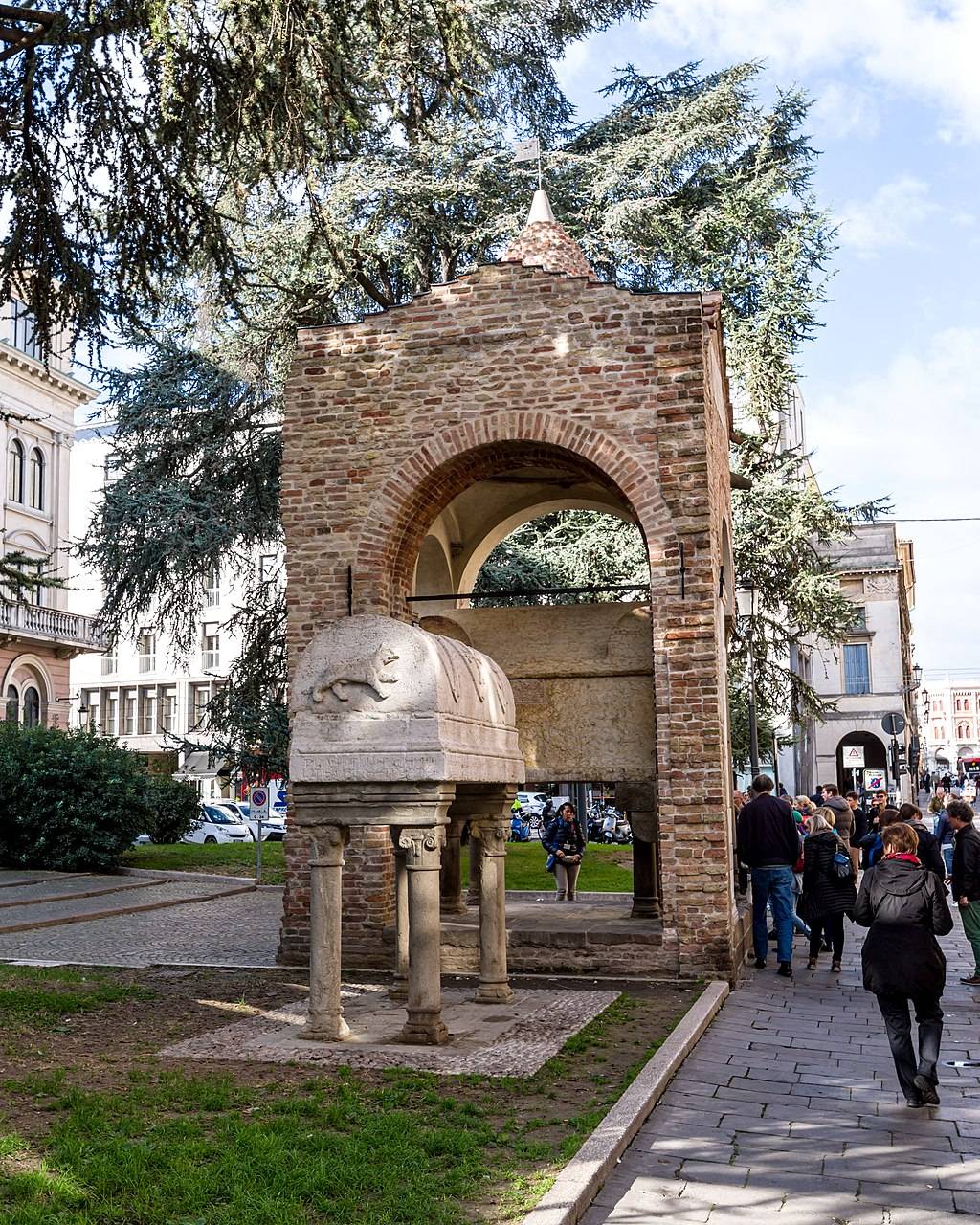Tomb of Antenor
The Tomb of Antenor is a monumental medieval shrine built to hold the sarcophagus of Antenor, a legendary Trojan prince who founded Padua.

In the heart of Padua, a few steps from Palazzo Bo, in the corner of the lively Piazza Antenore, there is a commemorative monument built in medieval times that, according to legend, should contain the remains of the mythological founder of Padua.
Antenor is described in Homer's Iliad as one of the wisest of the Trojan elders and counsellors who tried to persuade King Priam and the citizenry to return Helen to her husband, Menelaus, in order to avoid a war with the Achaeans.
Virgil, in the Aeneid, tells of how Antenor, after the destruction of Troy, would have arrived in northern Italy with his wife, children and a group of surviving Trojans, and would have founded the city of Padua, where he would later die and where he would have found burial.
Even the Roman historian Titus Livius – originally from Padua – in his masterpiece Ab Urbe Condita, confirms the story of the foundation of Padua by Antenor.
The confirmation of the presence in the city of the remains of Antenor came in 1274, during the execution of some excavations in the area of the current Piazza Antenore, San Biagio district. On this occasion, a marble ark was found, which contained a double coffin of cypress and lead with a sword inside (donated in 1334 to Alberto della Scala, Lord of Verona), two vases of gold coins and the incomplete skeleton of a knight with a stab wound to the head.
The client of the works, the humanist Lovato Lovati, believed he had discovered the remains of the epic Trojan hero and worked to have a shrine erected in his honour.
The Tomb of Antenor is made up of a medieval-style mausoleum, probably built by Leonardo Bocaleca, which protects the original ark. A plaque, written in Latin by Lovati and placed on the sides of the tomb, commemorates Antenor as the illustrious founder of Padua, the discovery of his body and the construction of the mausoleum by the Podestà Oliviero de 'Cerchi. The poem engraved on the west side of the ark reads:
The glorious Antenor, a voice aimed at the peace of the homeland,
He escorted here the escape of the Aeneas and the Trojans,
He drove out the Euganei, founded the city of Padua.
A mansion, made from humble marble, keeps it here.
The surroundings of the Tomb of Antenor changed over time following the transformations that happened in the area, such as the filling up of one of the Bacchiglione’s canals, whose course is today followed by the street Riviera del Ponti Romani, and the subsequent burying of the San Lorenzo Bridge, one of the four Roman bridges that crossed the river. Fortunately, the Tomb of Antenor remained undisturbed even when, in 1937, the Church of San Lorenzo, to which the sepulchre was attached, was demolished to open up the Piazza Antenore.
In 1985 the sarcophagus was opened to carry out restoration work. On this occasion, an analysis by the Physics Department of the University of Tucson, Arizona, ruled that the remains were datable between the third and fourth centuries AD. Thus excluding the possibility that they belonged to the legendary Trojan prince. The remains probably belonged to a wealthy Germanic or Hungarian warrior killed in battle.
Next to the aedicula, there is a minor ark that contains the remains of Lovato Lovati, the discoverer of the mythical remains and an eminent humanist, notary and poet. His works were highly appreciated by Giovanni Boccaccio and by Francesco Petrarca, who in his writings mentions him as the greatest of the poets of his generation. His tomb was resting in the Church of San Lorenzo, but after its suppression in 1808 in the wake of the Napoleonic ecclesiastical legislation, it wandered around the city until it found its current position in 1942.
Even if, as it was easy to imagine, the knight buried inside the tomb is not Antenor, the monument does not deserve to go unnoticed by virtue of its epic and fascinating story.
We welcome all contributions, no matter how small. Even a spelling correction is greatly appreciated.
All submissions are reviewed before being published.
Continue to changelog-

© 'Tomb of Antenor' by joergens.mi is licensed under CC BY-SA 4.0 Attribution copied to clipboard Failed copying attribution to clipboard -

© 'Tomba di Antenore in the Piazza Antenore, Padua' by Chris Light is licensed under CC BY-SA 4.0 Attribution copied to clipboard Failed copying attribution to clipboard -

© 'Tomb of Antenor' by joergens.mi is licensed under CC BY-SA 4.0 Attribution copied to clipboard Failed copying attribution to clipboard -

We welcome all contributions.
All submissions are reviewed before being published.
We welcome all contributions, no matter how small. Even a spelling correction is greatly appreciated.
All submissions are reviewed before being published.
Continue to changelogWe welcome all contributions, no matter how small. Even a spelling correction is greatly appreciated.
All submissions are reviewed before being published.
Continue to changelogWe welcome all contributions, no matter how small. Even a spelling correction is greatly appreciated.
All submissions are reviewed before being published.
Continue to changelogCategory
Cost
-
109 m
The Palazzo del Bo in Padua is a fifteenth-century complex and the historic seat of the University of Padua, one of the oldest universities in the world.
-
165 m
One of the oldest churches in the city, also popularly known as the Church of Santa Rita, it is historically a place of faith and meditation.
-
180 m
Palazzo Moroni, the usual name for the Municipal Buildings, is a complex of buildings in the city’s heart that house the offices of the Municipality of Padua.
-
200 m
Caffè Pedrocchi, one of the symbols of modern Padua, a café with historical prominence recognized for its coffee and good food
-
228 m
Piazza delle Erbe, one of the two squares that embrace the Palazzo della Ragione, is the temple of the Spritz cult and one of the most popular socializing places in Padua.




